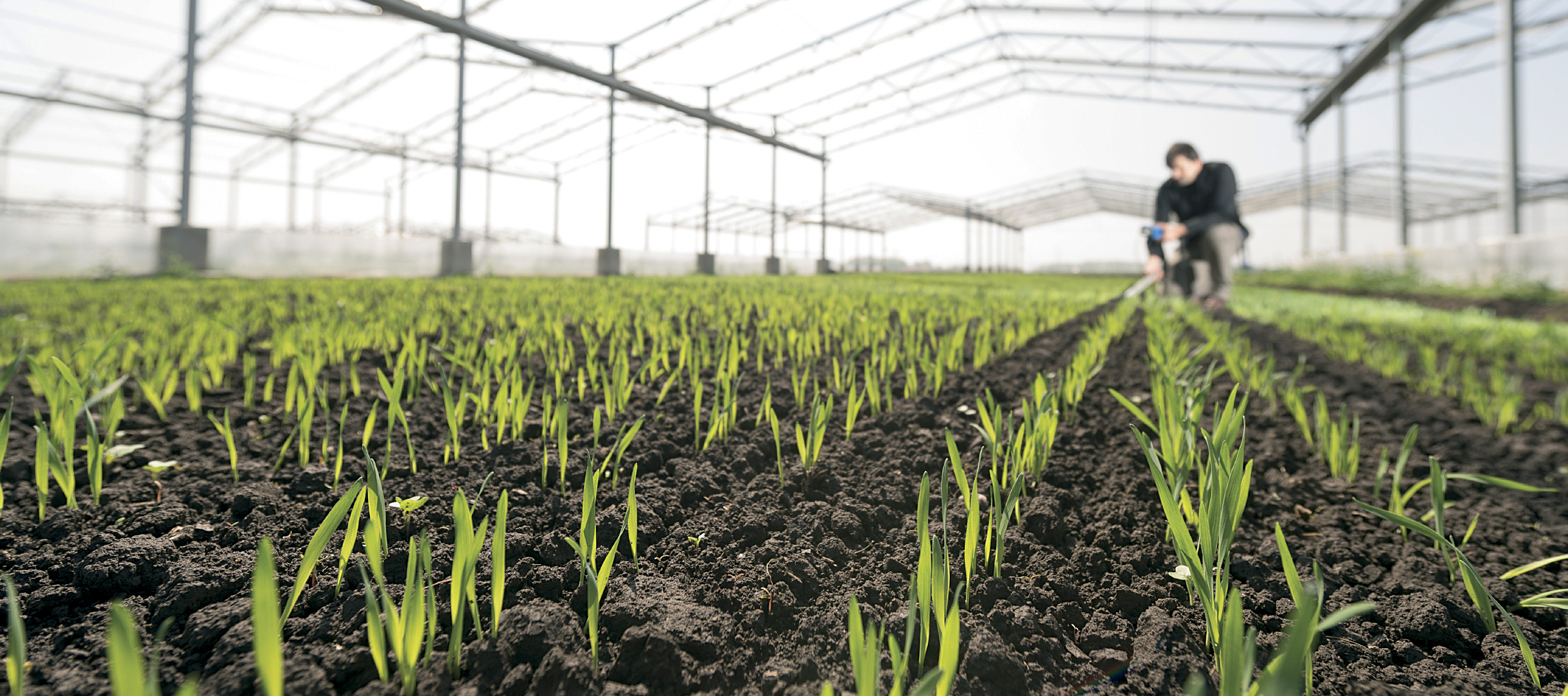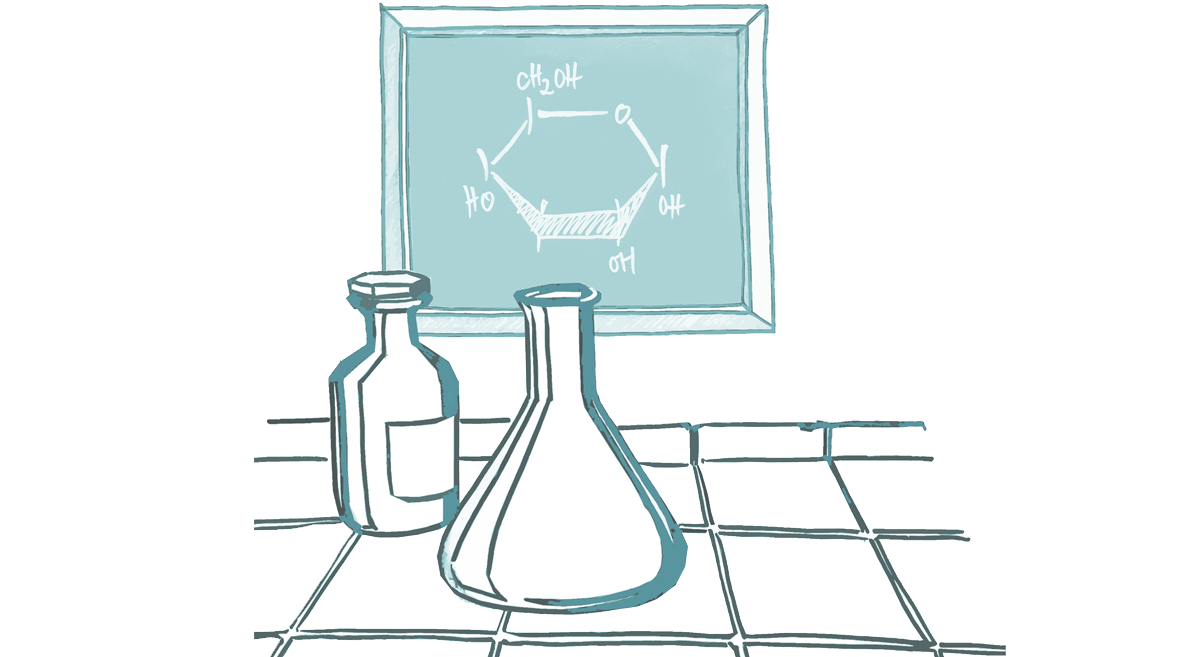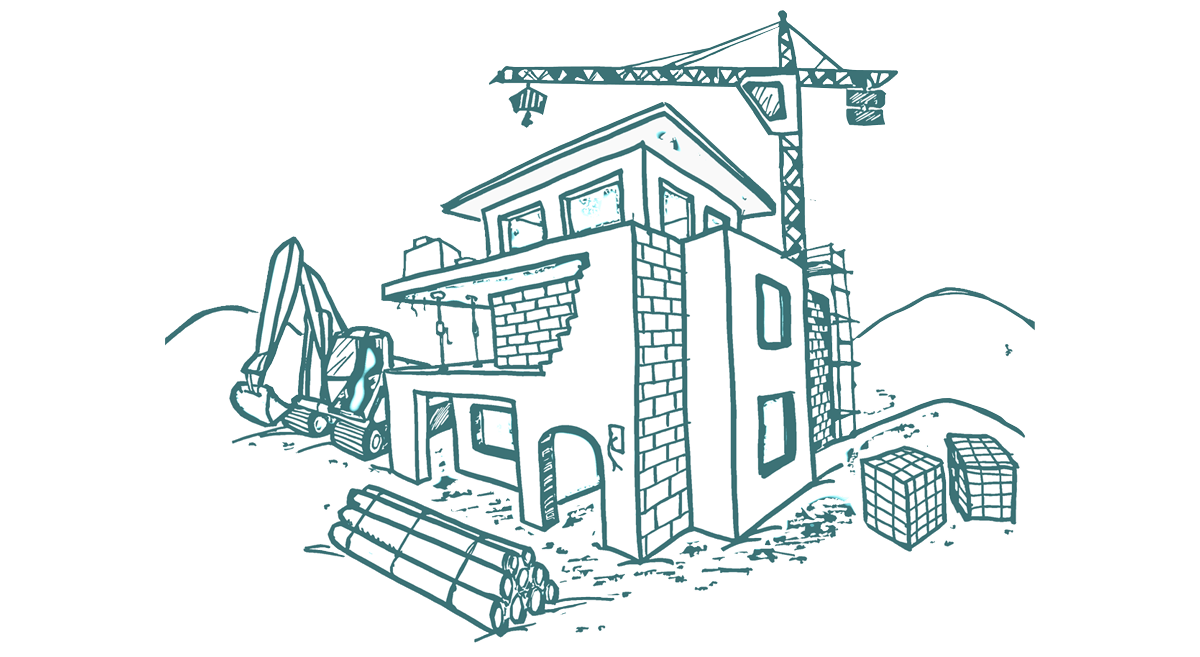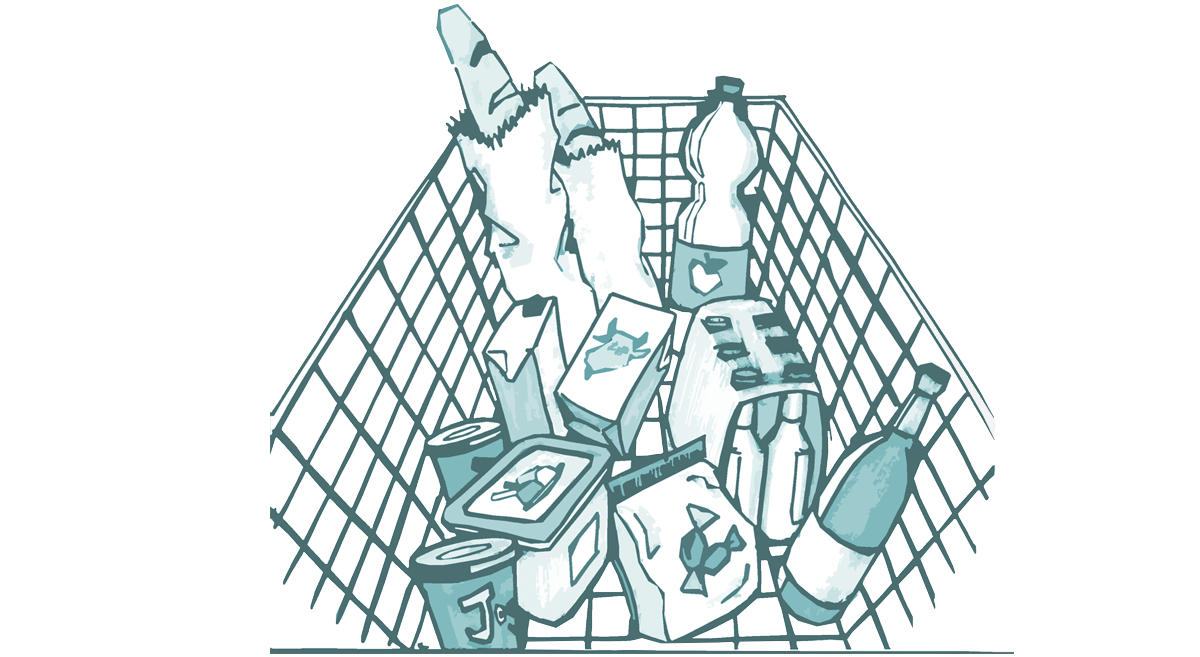Agriculture and forestry
Agriculture and forestry are two key pillars of bio-economy. Plant-based biomass, produced in meadows, fields and forests provides the foundation for a bio-based economy. Livestock, in turn, represent an essential resource for the supply of food. Recent research approaches and technologies will further advance sustainable developments in agriculture and forestry.
FACTS & FIGURES
No. of companies:
286.800
Employees:
651.000
Sales:
€37 billion
(Source: The German Farmers’ Association (DBV))
Examples of bioeconomy:
Bio-based raw materials, aquaculture,
farmed wood, plant and animal breeding

Animals and plants form the foundation for a bio-based economy. Agriculture and forestry additionally represent an essential economic factor: more than 300,000 companies are active in this field in Germany. The significance of agriculture and forestry for added value in rural areas is great. Those at work on farms and in forests husband more than three-fourths of the area of Germany. After the Second World War, one farmer could feed ten people: today, the number is 147. During recent years, many farmers have expanded their area of activity. They produce, for example, bio-based raw materials for industry as well as biomass for renewable energy. This includes industry and energy crops such as rapeseed and maize, in addition to by-products such as liquid manure and straw. From agricultural biomass, fermenters produce source materials for bio-based plastics and other sustainable chemicals (see section “Chemistry”). Biogas plants and CHP stations likewise supply heat, power and fuels (see section “Energy”). Around half the German farmers also own forests. Wood as raw material goes into many and various products: lumber, plywood, engineered wood, wood-synthetic composites, paper, cardboard, bio-energy pellets and briquettes.
This ongoing development of agriculture in the sense of sustainable and resource-efficient husbandry is based in good part on the tremendous technological advances made over recent decades. In arable farming, for example, precision agriculture is becoming increasingly important. Intelligent tractors and harvesters have already become reality: equipped with sensor systems, on-board computers and satellite navigation, tractors and other farm machines can record plant status as they travel over the fields. They compare this status with programmed fertilizer requirements, combine results with degeodata and fertilize the fields exactly in accordance with soil characteristics and nutrient demand. Precision agriculture thereby contributes to demand-driven, environmentally friendly and energy-saving arable farming – and to the reduction of fuel use, agrochemicals and fertilizers. Technical agrarian innovations have also decisively enhanced animal husbandry and animal health. The modern stall is often equipped with high-tech sensors for demand-driven control of supply of water and feed to animals – and to enable automatic milking. Such technological developments will in future contribute to reducing resource consumption in agriculture and to further advancing farm management in the sense of sustainable agriculture. In the context of bioeconomy, it will be essential to interlink the diverse knowledge in individual areas of agriculture even more extensively than until now, and likewise to further integrate upstream and downstream areas of work.

For high-yield grain, robust sugar beets and faster-growing poplars: The development of crops that meet the requirements of the future demand innovative research approaches. Research activities for applied plant research that are funded by the BMBF are concentrated under the aegis of PLANT 2030. Currently included here are the funding initiative called Plant Biotechnology for the Future, as well as funding projects that are part of the transnational programme PLANT-KBBE. Public research institutions and companies involved in plant breeding and related areas of bioeconomy collaborate here.
These goals apply especially in view of global demand development: which confronts domestic agriculture with many and various challenges. As a result of the growing world population, demand for biomass is rising steadily. It is not possible to meet this demand simply by growing more plants, since the global availability of farm area per capita is decreasing. The reasons here are sprawling settlements, erosion, effects of climate change and non-sustainable land use. Experts accordingly believe that the increasing demand for biomass can be met especially by improvement of cultivated crops and by innovative and environmentally benign methods of cultivation. Agrarian research and plant breeding can provide impulses here. In international comparison, Germany occupies a favourable position in plant research. In addition to around 30 universities, 25 institutes in Germany conduct agrarian plant-related research at various locations. These institutes include major research organizations and federal government departmental research institutes such as the Julius Kühn Institute and the Johann Heinrich von Thünen Institute. The work of these two institutes is financed by the Federal Ministry of Food and Agriculture (BMEL) and the Federal Ministry of Education and Research (BMBF). In the agrarian area, research is also conducted at many small and medium-sized agricultural enterprises, as well as at facil-ities of the German States, including the institutes of the Leibniz Association (WGL).
A number of objectives have driven research for the husbandry of plants in the sense of bio-based economy. One prime goal is increasing the yield of crops by use of plants that are more robust and better adapted to respective environmental conditions. Advanced plant breeding, however, should also contribute to enlargement of plant diversity and to enhancing the spectrum of substances produced by plants. Demand is especially great for new varieties that are resistant to stress factors such as drought, lack of nutrient and excess of salt. Additional guidelines include an optimum of efficiency and sustainability in using available environmental resources such as soil, water and nutrients – while keeping sight of bio-diversity.
Cooperative projects in the BMBF funding initiative Innovative Plant Breeding within the Cultivation System (IPAS), for example, investigate the benefits and disadvantages of new techniques in plant breeding. The overall objective here is to consider plants in an overall system and to examine current developments in agriculture with regard to their social, ecologic and economic consequences.
Plant genome research, which represents an essential building block in plant breeding, addresses the following questions: How have plants adapted over the years to their environmental conditions? Which plant characteristics are genetically embedded in traditional plant varieties, and which have possibly become lost in the course of modern breeding? Between 1999 and 2014, the BMBF funded researchers in science and business with approximately 160 million euros, within the context of the funding measure Genome Analysis of the Plant Biological System, (GABI), in order to address such questions as these. These activities will be continued in the initiative PLANT 2030.
In conjunction with studies conducted on model plants, researchers together with companies are investigating important crops on the molecular level. One example:
Barley ranks after wheat ass the second most important grain in Germany. Despite its size and complexity, the genotype of barley has by now been almost entirely decoded. An international consortium under the direction of scientists from Gatersleben, Germany, has performed a thorough inventory of the barley genome and has prepared a comprehensive gene catalogue. This molecular-genetic map is an extraordinarily valuable resource for plant researchers and plant breeders around the world, because it enables complete sequencing of the barley genome. Consequently, new varieties of barley are developed as a next step. Similar sequencing projects are also underway for other crops – for example, for the sugar beet. German researchers are likewise playing important roles here in decoding and in genome analysis.
In advanced greenhouses, researchers at the Helmholtz Centre for Environmental Research in Bad Lauchstädt, Germany, are investigating how various climate conditions affect the growth and yield of plants.

Plant scientists can use a great variety of tools here. They aid in detecting interesting characteristics and, under use of biotechnological methods, in accelerating the overall breeding process. Also involved are research approaches that – with the aid of the latest techniques – can simulate various climate scenarios in the greenhouse and, on this basis, can calculate consequences for growth and yield. Such projects are being carried out, for example, at the Helmholtz Centre for Environmental Research in Bad Lauchstädt, Germany. Whereas the long-term and global effects of climate change are being intensively studied, there have so far been hardly any robust conclusions concerning extreme weather conditions that regionally fluctuate greatly as a result of climate change.
To obtain sound information on this issue, the BMEL has additionally initiated the research project entitled Agricultural Extreme Weather and Risk Management Possibilities. The ministerial research institutes of the BMEL, the Thünen Institute and the Julius Kühn Institute in collaboration with Deutscher Wetterdienst (DWD, Germany’s National Meteorological Service), as well as various external research units, are executing this effort as a cooperative project. Initial findings indicate that hailstorms, late frost, drought and water build-up represent the greatest challenges for farm operations with vegetables, fruit, vineyards and hops. In contrast, storm damage, extreme drought and heat are most significant for forestry. In spring of 2015 the experts involved submitted a final report. Furthermore, observations of transforming external characteristics of plants are becoming increasingly important. To examine and understand the effects of certain genetic alterations on a plant, it is essential to study its interaction with the environment. This takes place by means of phenotyping: searching for plants according to complex external characteristics or properties, and recording these characteristics without harming or destroying the plants. To develop such capacities in Germany, the BMBF has since early 2013 funded the German Plant Phenotyping Network (DPPN) in Jülich, where a high-throughput facility to measure plants is being set up. Insights that are being gained here – in col-aboration with researchers at the Helmholtz Centre in Munich and at the IPK in Gatersleben – can in turn be incorporated into plant breeding.
For organic farmers, sustainable bio-based operations have been the core of their work for many years. To farm with methods that conserve resources, protect the environment and minimize intrusions into nature, organic farmers value closed-cycle operations to the maximum possible extent. They also cultivate the fodder for their animals primarily on their own farms. They shun the use of easily soluble mineral fertilizers and chemical substances for plant protection. To keep the soil fertile, organic farmers fertilize primarily with solid or liquid animal manure – or they regularly cultivate crops such as field beans, peas and clover, which enhance the fertility of the soil. In 2012, approximately 23,000 farms (7.7 % of all) operated on the principles of ecological agriculture. In total, they farmed around 6 % of all agriculturally used land in Germany: just over one million hectares. As with their conventionally farming colleagues, the topic of yield is also an important issue in organic agriculture – also not least with a view to the increasingly great demand for organic products in society.
Interest is consequently great in new research findings on land use and soil fertility, and in other strategies to sustainably raise crop yields. The potential for legumes is considered by no means to be exhausted here. The rhizobia on the roots of these plants fix nitrogen taken from the air. They accordingly represent an important fertilizer source for soils. They are likewise rich in proteins and are therefore a valuable source of proteins. In the context of bioeconomy, the federal government funds projects in conjunction with the Protein Plant Strategy that are designed to lead to renewed increase in Germany in the breeding of protein-rich lupins, soya, peas and field beans.
Forests are one of our most important natural resources, since wood is a valuable raw material for a great diversity of industrial sectors. Within this context, the federal government in 2012 published its Forest Strategy 2020. The purpose of this strategy is to find a harmonious and viable balance between the increasing and partly competing expectations of society for forests, and their sustainable output capability. This strategy also stipulates strategic objectives for sustainable wood production from German forests. Cultivation plays a key role here, since tree breeding is particularly expensive and tedious. Nevertheless, to assure long-term continuity, the institutions of the federal government and the states that are responsible for breeding forest plants have produced a Breeding Strategy under the direction of the Thünen Institute for Forest Genetics. This strategy is planned for the coming 15 years and applies to six tree species. This strategy is the basis for an initial alliance project, Fit-ForClim, which is funded through the Forest Climate Fund of the Federal Ministries of Agriculture and of the Environment. To assure that the forest of the future is suited for its respective climate and location conditions, the Thünen Institute for Forest Genetics collaborates here with the forestry experimentation laboratories of the German states in supply of viable and high-value forest reproductive material for the following species of trees: Douglas fir, spruce, pine, sycamore maple, larch and oak. Work here includes identifying zones of use, selection of trees for planting and development of breeding populations. Plant technologies and insights gained into forest genetics can accordingly help to develop new reproductive material faster. This also applies to the economically important market with Christmas trees: Germans spend almost 700 million euros for approximately 29 million of them every year. As part of the BMBF funding initiative KMU Innovativ (SME Innovative), research is conducted at the tree nursery Baumschulen Oberdorla to breed robust Douglas and other firs and to breed them clonally with the techniques of in vitro reproduction. One objective: a Christmas tree that thrives well in plantations and grows with uniformly high quality.
In the BMEL cooperative project FastWOOD, in which eight partners participate, the objective is to assure the satisfactory cultivation of poplar, willow and locust trees and to improve the required conditions for large-area, reliable and cost-effective cultivation in short-rotation forestry. In addition to breeding, one major objective is to exploit the potentials of unused raw materials. In this way, and following the exceptional storm damages to forests over the past decades, tree cultivation stands have been established in many federal states in which pioneer forests consisting of stands of such trees as birches, alders and willows have developed. New trial approaches for the handling of such stands are being pursued: for example, in the PioWood project funded by the BMEL and coordinated by the Institute of Forest Science of Freiburg University.
Aquaculture is a special form of animal husbandry that involves controlled breeding, raising and keeping aquatic organisms. This includes not only fish, but also other freshwater and seawater dwellers such as mussels and algae. Aquaculture is worldwide among the strongestgrowing sectors in the food industry, with annual growth figures of 5 to 8 %. Good ecological performance makes aquaculture particularly interesting for sustainable production of animal protein. In Germany, aquaculture ranges from close-to-nature, extensively managed pond systems to flow-through systems and closed warm-water cycle facilities. German aquaculture companies are primarily family-owned. In 2012 the Federal Statistical Office reported production of approximately 20,000 tons of fish for human consumption. Germany lags behind, however, on the international market. German aquaculture experts from science and business have, following an EU directive, prepared a National Strategy Plan for Aquaculture (NASTAQ). This plan formulates measures to promote sustainable production increase in aquaculture in Germany as well.
There is no lack of innovative approaches. At more than 30 German research institutions, scientists address issues for optimal, sustainable aquaculture. Approaches based on cascade operations are particularly promising: re-use of purified water and utilization of heat emitted from biogas systems have increasingly helped to move aquaculture cycle systems from water to land – and to make them economically attractive. Völkingen Public Utilities, in the state of the Saarland, constructed the first inland marine fish farm. This farm produces sea bass, gilthead seabream and sturgeon – the farm offered the first fish in regional supermarkets beginning in 2014. There are similar operations in the German states of Mecklenburg- Vorpommern and Schleswig-Holstein.

Aquaponics and urban farming
Entirely innovative approaches are being followed, however, to combine plant cultivation and animal husbandry in one circulation system: in aquaponics. Such systems are extensive closed facilities that re-use nutrients, metabolic products, carbon dioxide and water. With funding from the BMBF, the Leibniz Institute of Freshwater Ecology and Inland Fisheries (IG), for example, has developed an emission-free system that allows joint cultivation of cichlid fish and tomatoes. Other innovative concepts aim to integrate plant cultivation in urban space – for example, on roofs and on façades. This so-called urban farming is a futuristic vision to cover demand for regional products, and to systematically exploit waste, residual materials and waste heat. The Fraunhofer Institute for Environmental, Safety and Energy Technology (UMSICHT) is conducting work for combination of greenhouse technologies with new concepts, innovative process engineering and material research to meet the specific requirements of buildingintegrated agriculture and to enable technically, economically and ecologically beneficial results.








